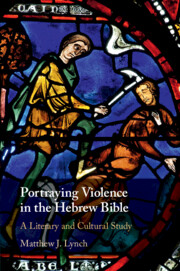Book contents
- Portraying Violence in the Hebrew Bible
- Portraying Violence in the Hebrew Bible
- Copyright page
- Publisher’s note
- Dedication
- Contents
- Acknowledgements
- Abbreviations
- Introduction
- Part I Violence and Ecology
- Part II Violence and Moral Speech
- Part III Violence and Justice
- Part IV Violence and Impurity
- 9 Violence and the Problem of Impurity
- 10 The Rhetoric of Violence and Impurity
- Conclusion
- Appendix
- Bibliography
- Index
10 - The Rhetoric of Violence and Impurity
from Part IV - Violence and Impurity
Published online by Cambridge University Press: 06 May 2020
- Portraying Violence in the Hebrew Bible
- Portraying Violence in the Hebrew Bible
- Copyright page
- Publisher’s note
- Dedication
- Contents
- Acknowledgements
- Abbreviations
- Introduction
- Part I Violence and Ecology
- Part II Violence and Moral Speech
- Part III Violence and Justice
- Part IV Violence and Impurity
- 9 Violence and the Problem of Impurity
- 10 The Rhetoric of Violence and Impurity
- Conclusion
- Appendix
- Bibliography
- Index
Summary
Chapter 10 reflects on four related conceptions of bloodshed’s defilement. It focuses on the question of what the language of impurity and defilement enabled biblical writers to say about the problem of violence. First, the persistence of uncleanness thus enables biblical writers to speak about the residual effects of bloodshed (and idolatry) that punishment alone could not resolve. Second, the severity of violence refers to ways biblical writers index the ‘high stakes’ of bloodshed with reference to Yhwh’s presence in the camp and the location of bloodshed in Jerusalem. Moreover, it marked the outer boundaries of what was considered acceptable in Israel. Third, the disgust of violence designates the moral revulsion that bloodshed elicits, or at least should elicit. Finally, the purification of violence reflects ways that biblical writers constructed new meanings from the trauma of violence or national disaster by envisioning divine cleansing of the people and land in preparation for the preservation or return of Yhwh’s presence.
- Type
- Chapter
- Information
- Portraying Violence in the Hebrew BibleA Literary and Cultural Study, pp. 251 - 260Publisher: Cambridge University PressPrint publication year: 2020

